Waste not: Where Wegmans' fresh abundance goes when it's 'less than perfect'
- Oops!Something went wrong.Please try again later.
On Saturday mornings, the parking lot at the Wegmans store in Geneseo, New York, is packed.
It's a busy scene replicated at most of the chain's locations across the East Coast: employees arriving for their morning shift, customers pulling out branded reusable bags for their weekly shopping trip, delivery truck drivers unloading crates of food at the back of the building.
There's another player in this scene, one that may go unnoticed to the casual Wegmans shopper. But their role is vital to the Wegmans' ecosystem.
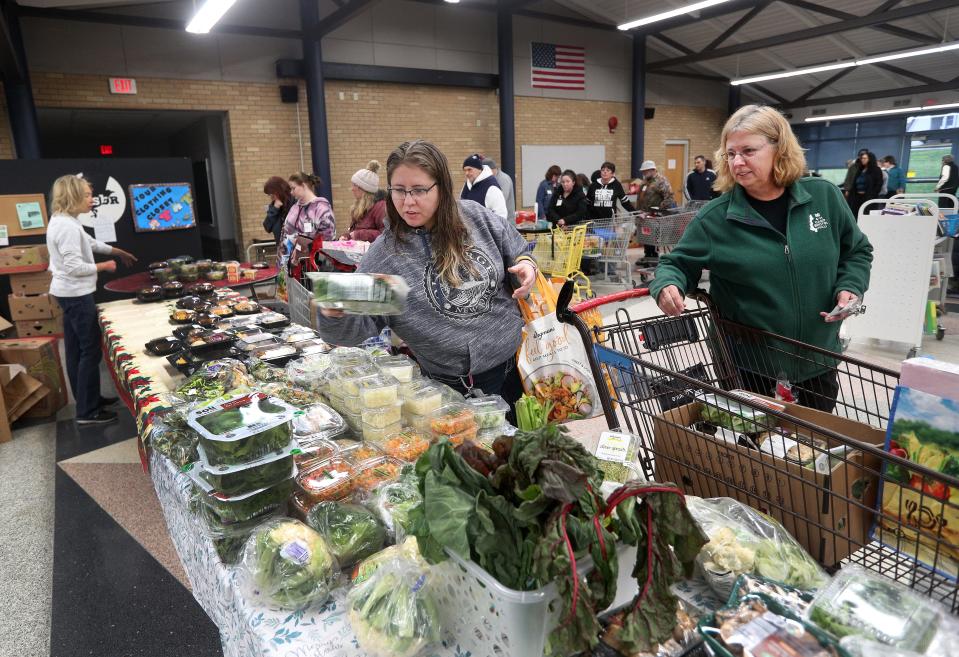
The abundance awaiting shoppers every day — mounds of ruby red apples, cave-ripened cheeses in cloudy display cases and baskets filled with warm loaves of freshly made bread — operates on a tight time limit, and turnover happens quickly. The printed sell-by time on a prepared turkey sandwich approaches, the bags of lettuce at the back of the cooler haven't been purchased, a white sheet cake with frosted yellow flowers sits in the bakery display case not a moment too long.
There's still a place for the food Wegmans deems "less than perfect," and it's a responsibility the store takes an active role in at the back of the store, near the loading dock, where food pantry volunteers and local farmers gather each week to pick up the donation set aside for them.
It's where they'll find items like that unbought cake, along with loaves of bread, containers of pineapple and bags of salad mixes, all packed into cardboard boxes and ready to be taken to their next stop to continue Wegmans' role of feeding their community, just in a different way.
A glimpse into Wegmans' sustainability efforts: A 'holistic picture'
Partnering with local food pantries and farmers is part of Wegmans' three-pronged approach to sustainability: reducing waste to landfills, reducing emissions and carbon footprint and sustainable packaging. The effort has caught the attention of industry experts.
“Folks like Wegmans, they’re leading the pack in trying to reduce waste, reduce carbon footprint, reduce energy use in the store,” food marketing expert Phil Lempert said.
Currently, all 109 Wegmans stores are participating in Wegmans’ path to zero waste initiative. The company donated 19.6 million pounds of food in 2020, 27 million in 2021 and as of October 2022, they’ve already donated another 23 million.
“If it’s still safe and still edible for someone, it should not be going in the trash," said Wegmans sustainability manager Chris Foote, "it should not be going into a compost bin."
Foote has been working at Wegmans full time since 1997. Tracking how much inventory they bring in and the amount they sell goes into the food waste reduction process, he says, but maximizing donations has been the focal point in recent years.
“They really have a very holistic picture of the food world and want to be a great partner to farmers and ranchers as well as to shoppers,” Lempert said of Wegmans.
Where the Wegmans abundance goes
All Wegmans stores are working with food pantries and 30 locations, including Geneseo, are working with local farmers as part of their sustainability efforts. Sent By Ravens in Livonia, New York, is one of two or three food pantries the Geneseo Wegmans location donates to and store manager Dan Carnevale says it’s their largest.
When he started working with the company in 2006, they were mainly focused on donating bakery items and some produce. Bread and produce are still in the top three of what the pantry receives each week, but prepared meals have also become a welcome addition.
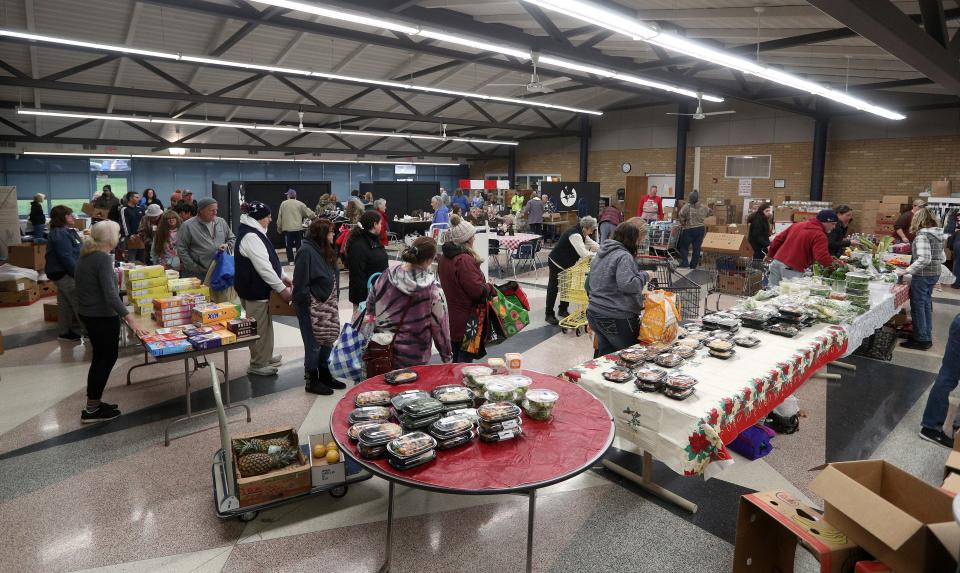
"It really is the most wonderful program and has really put food, so much food, on so many clients' plates," said Anne Ranieri, the pantry's director.
On a Saturday in December, several miles away from Wegmans' Geneseo store, a line forms outside the Sent By Ravens food pantry.
Wrapped in rain jackets and huddled under umbrellas, clients wait outside the doors of the cafeteria of the Livonia Central School District Administration building where the program is housed until Ranieri pushes the door open to welcome them in.
There's a stockpile of food from Wegmans in the pantry's kitchen: 12 boxes of produce, eight bakery boxes and two boxes filled with prepared meals. The smell of brewed coffee wafts through the air and dozens of Sent By Raven volunteers greet patrons as they pass through a long line to pick up food.
In October, Sent By Ravens served 507 households, including 610 adults, 479 children and 327 seniors through its pantry kitchen on Saturdays and deliveries. With inflation and the increasing price of food, Ranieri said they are seeing a demographic they have not seen before.
"Food insecurity doesn't mean 'I don't have any food in my house,'" she said. "It can mean that, but it also means 'I don't know when I'm going to have access to food next.'"
'Less than perfect' for customers, but just right for others
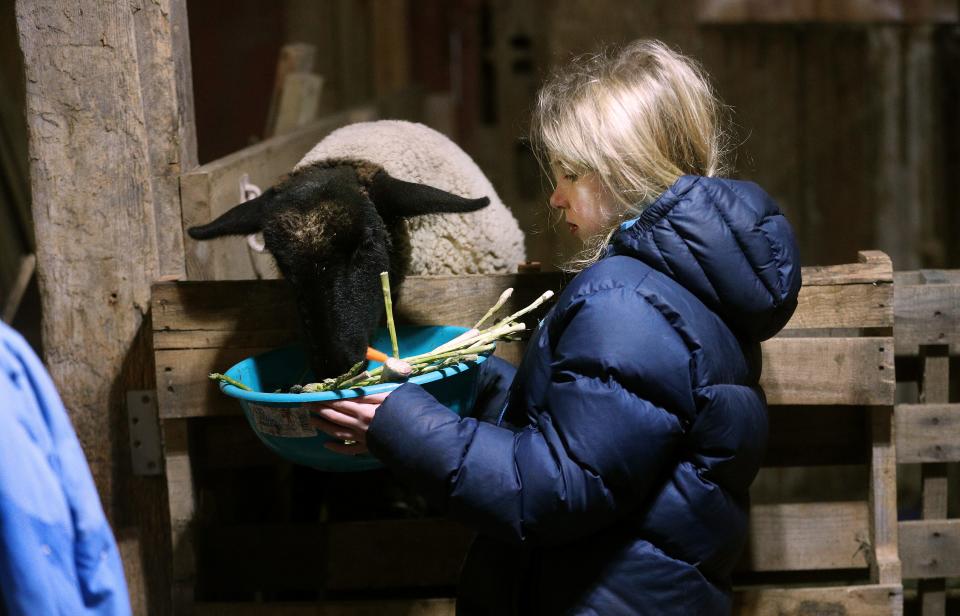
Down the road at a farm in Livonia, 9-year-old Brigid kneels down on the hay-covered barn floor, opens a bag of Wegmans branded salad mix and dumps its contents into a bucket. Asparagus is next, then the salad bowls.
A bowl of fruit is set outside while her mother, Belinda Cole, flings handfuls of grapes out to the chickens and her children step into the pig pen to offer some to their almost five-week-old pigs.
Farms like Cole's are the last stop for Wegmans' leftover food before heading to Natural Upcycling in Linwood, New York, to go through the process of anaerobic biodigestion, which Wegmans sustainability manager, Foote, says traps the methane food waste gives off as its broken down to be used as a source of energy. The produce they receive is what Foote calls “less than perfect.”
"For a small startup farm, I think it's an incredible resource," Cole said of Wegmans' donations. Cole runs the farm with her husband, Matt, and their three children, Finn, 11, Brigid and 7-year-old Nora.
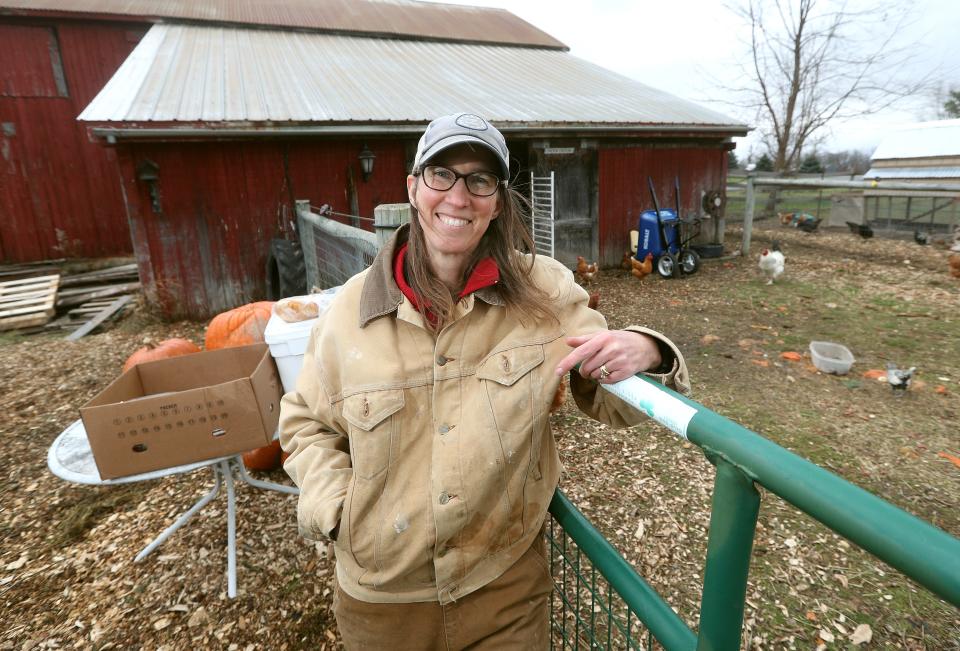
Through the donation process, Cole's children have been able to contribute to the farm, form stronger connections with the animals and learn life skills.
"They spend literally all day out there opening packages, they call them 'yum yums,' and they fill bowls and they make 'pig salad,'" Cole said. "My kids have experienced and learned how to properly handle knives with fruit and produce."
Creating 'food stable communities' one Wegmans cake at a time
Ranieri believes Wegmans' donations, along with those the Sent By Ravens pantry gets from Foodlink, Panera Bread, the Church of Jesus Christ of Latter Day Saints in Palmyra and a nearby monastery, have helped create stability in the area.
"The community is great to us," Ranieri said. "What they've been able to do to create food stable communities is truly amazing because a food stable community will equate with a safer community."
Out in the rain on a Saturday morning, Sent By Ravens pantry volunteer Monte Hurd climbs up into a weathered white van parked near the road and turns the key in the ignition. It takes a few tries, but the engine stutters to life, and Hurd slowly guides the vehicle out onto the route he and other volunteers take every week at this time. The van bumbles down steep hills past family farms, murals featuring cows and eagles mid-flight and the wide views of state Route 20A on its way to Wegmans in Geneseo.
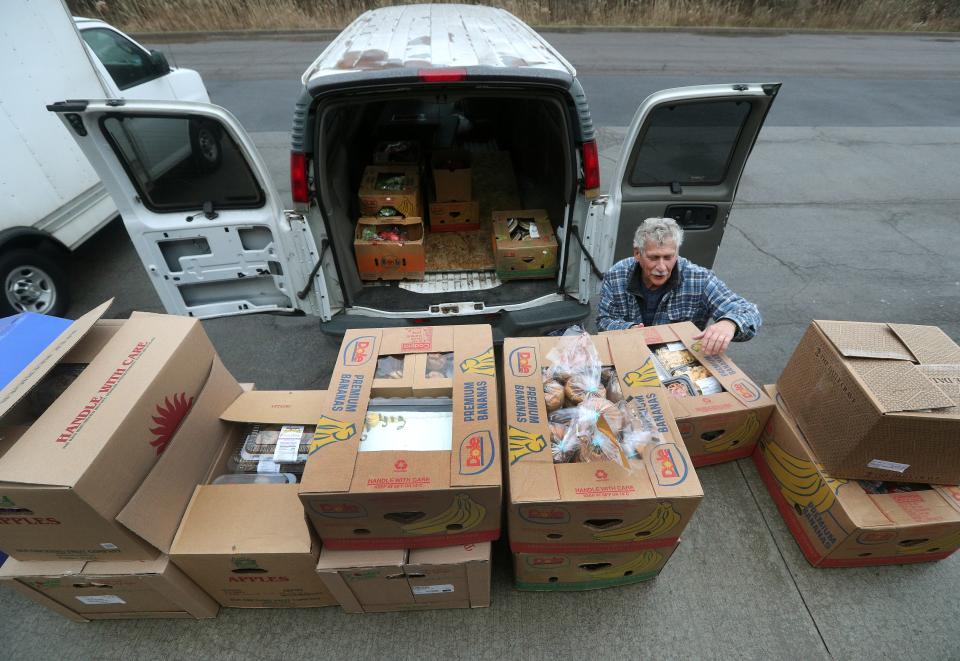
When he arrives, Hurd drives past the cars turning into the front parking lot and instead finds an empty spot by the loading dock at the back of the store. Just inside, his order awaits.
Pantry volunteers don't know what the store will have available for them until they arrive to pick it up. Today, Hurd finds a stack of cardboard boxes filled with leafy greens and two grocery carts, each with a mountain of bread piled high inside of them.
On top of one of those mountains, there's something else, a special treat this week: a white sheet cake, with yellow roses.
Follow Emily Barnes on Twitter @ByEmilyBarnes. To get unlimited access to the latest news, please subscribe or activate your digital account today.
WEGMANS AND THE WORLD
The USA TODAY Network is exploring how Wegmans is adapting to our changing world. We'll learn insights from Wegmans workers, sit in on a rare interview with top Wegmans leadership, dive deep into the chain's location decisions, visit one of the newest and most unlikely grocery store spots, find out how prepared foods get a second act, and learn the story behind the stores' iconic tote bags. Along the way, we'll reveal how Wegmans' business practices affect our communities, its workers and the environment.
This article originally appeared on USA TODAY: Wegmans produce, meals receive second life in food pantries, farms
